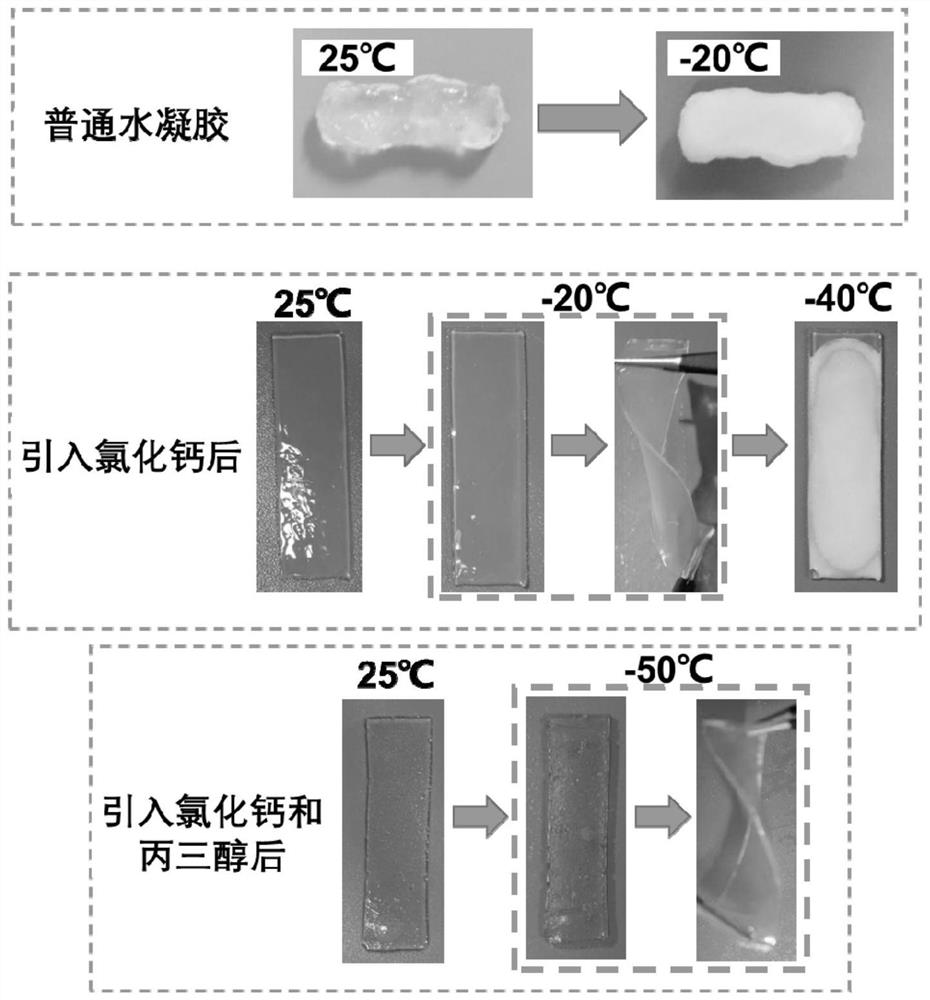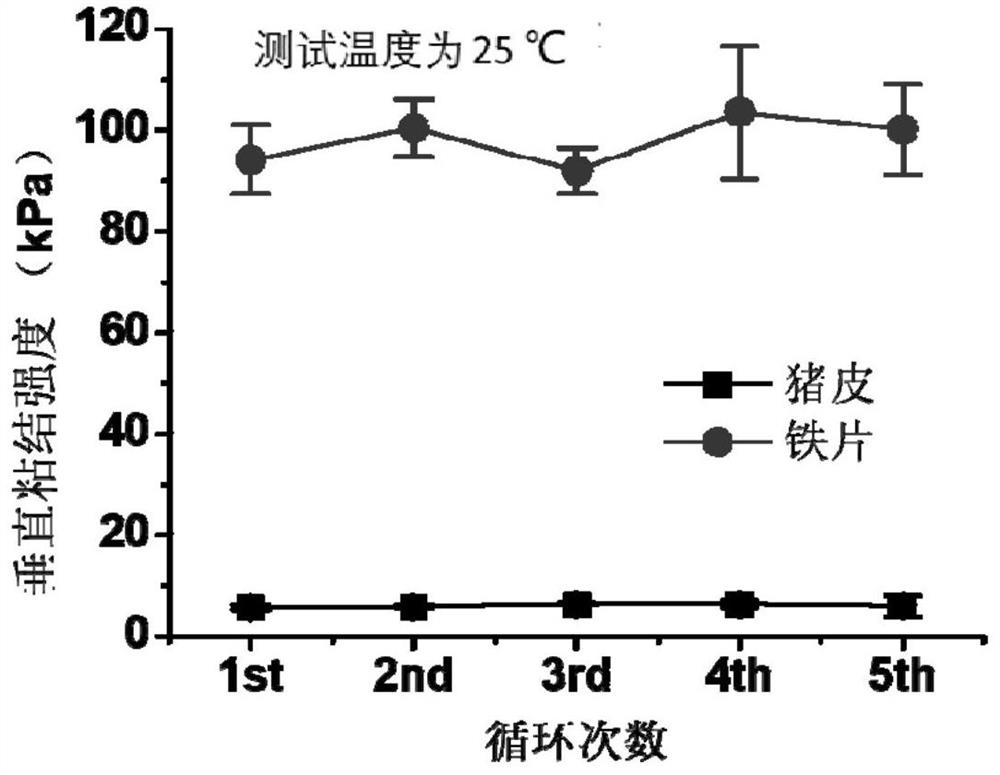A kind of ice-resistant hydrogel bonding material and its preparation method and application
A bonding material and hydrogel technology, applied in chemical instruments and methods, other chemical processes, etc., can solve the problems of inability to resist ice and anti-ice hydrogel, irreversible bonding, etc.
- Summary
- Abstract
- Description
- Claims
- Application Information
AI Technical Summary
Problems solved by technology
Method used
Image
Examples
preparation example Construction
[0043] The present invention also provides the preparation method of this ice-resistant hydrogel adhesive material, such as figure 1 Shown, described preparation method comprises the following steps:
[0044] (1) glycerol and calcium chloride are dissolved in deionized water to make calcium chloride-glycerol mixed solution;
[0045] (2) polyethyleneimine, acrylamide, cross-linking agent N, N'-methylenebisacrylamide (BAM) and photoinitiator 2960 are dissolved in the calcium chloride-glycerol mixed solution to make water Gel prepolymerization solution;
[0046] (3) Stir the hydrogel pre-polymerization liquid for 40 minutes by magnetic force and ultrasonically stir for 10 minutes to obtain a uniform hydrogel pre-polymerization liquid;
[0047] (4) Pour the uniform hydrogel pre-polymerization solution into a mold, and irradiate with ultraviolet rays for 2 hours to obtain the solid ice-resistant hydrogel bonding material.
[0048] In the step (1), the selected ratio of water and g...
Embodiment 1
[0056] 21.62 g of glycerol and 7.57 g of calcium chloride were dissolved in 9.81 g of deionized water to prepare a calcium chloride-glycerol solution. Then add 9g of acrylamide monomer, 2g of 50% PEI aqueous solution (containing 1g of PEI, which is a branched polymer with a molecular weight of 70000), 0.0054g of N,N'-methylenebisacrylamide and 0.18g of photoinitiated Agent 2960 is used to make a hydrogel prepolymer solution. Then magnetic stirring for 40 minutes and ultrasonic stirring for 10 minutes to obtain a uniform hydrogel pre-polymerization solution. Pour the uniform hydrogel pre-polymerization solution into a mold, and irradiate it with ultraviolet rays with a wavelength of 365nm and a power of 8W for 2 hours to obtain a hydrogel solid.
[0057] Taking iron as a test sample, this example is used to conduct a vertical bond test at room temperature (25° C.), and the measured bond strength is 90-100 kPa.
[0058] image 3 It is the cycle test result of the ice-resistan...
Embodiment 2
[0064] 21.62 g of glycerol and 7.57 g of calcium chloride were dissolved in 10.56 g of deionized water to prepare a calcium chloride-glycerol solution. Then add 9.75g of acrylamide monomer, 0.5g of 50% PEI aqueous solution (containing 0.25g of PEI, which is a branched polymer with a molecular weight of 70000), 0.00585g of N,N'-methylenebisacrylamide and 0.195 g photoinitiator 2960 made of hydrogel pre-polymerization liquid. Then magnetic stirring for 40 minutes and ultrasonic stirring for 10 minutes to obtain a uniform hydrogel pre-polymerization liquid. Pour the uniform hydrogel pre-polymerization solution into a mold, and irradiate it with ultraviolet rays with a wavelength of 365nm and a power of 8W for 2 hours to obtain a hydrogel solid.
[0065] Taking iron as a test sample, this example is used to conduct a vertical bond test at room temperature (25° C.), and the measured bond strength is 85-90 kPa.
PUM
 Login to View More
Login to View More Abstract
Description
Claims
Application Information
 Login to View More
Login to View More - R&D
- Intellectual Property
- Life Sciences
- Materials
- Tech Scout
- Unparalleled Data Quality
- Higher Quality Content
- 60% Fewer Hallucinations
Browse by: Latest US Patents, China's latest patents, Technical Efficacy Thesaurus, Application Domain, Technology Topic, Popular Technical Reports.
© 2025 PatSnap. All rights reserved.Legal|Privacy policy|Modern Slavery Act Transparency Statement|Sitemap|About US| Contact US: help@patsnap.com



